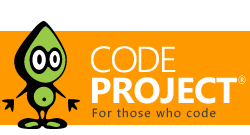|
|
//===========================================
// MVC# Framework | www.MVCSharp.org |
// ------------------------------------------
// Copyright (C) 2008 www.MVCSharp.org |
// All rights reserved. |
//===========================================
using System;
using System.Text;
namespace MVCSharp.Core.Configuration.Views
{
#region Documentation
/// <summary>
/// ViewInfo objects are used by views managers for view creation
/// and activation. Base ViewInfo objects contain only information
/// on view type and name (<see cref="ViewType"/> and <see cref="ViewName"/>
/// properties), whereas different <c>ViewInfo</c> subclasses
/// define properties specific to the corresponding
/// presentation platforms.
/// </summary>
/// <remarks>
/// It is unlikely you will need to manually create ViewInfo objects.
/// Typically they are generated by the framework from <see cref="ViewAttribute"/>
/// and derived attributes.
/// </remarks>
/// <seealso cref="ViewAttribute"/>
#endregion
public class ViewInfo
{
private string viewName;
private Type viewType;
#region Documentation
/// <summary>
/// ViewInfo constructor. Creates ViewInfo object with specified
/// <c>ViewType</c> and <c>ViewName</c> values.
/// </summary>
#endregion
public ViewInfo(string viewName, Type viewType)
{
ViewName = viewName;
ViewType = viewType;
}
#region Documentation
/// <summary>
/// Specifies the view name.
/// </summary>
#endregion
public string ViewName
{
get { return viewName; }
set { viewName = value; }
}
#region Documentation
/// <summary>
/// Defines view type as a part of a view description.
/// </summary>
#endregion
public Type ViewType
{
get { return viewType; }
set { viewType = value; }
}
}
}
|
By viewing downloads associated with this article you agree to the Terms of Service and the article's licence.
If a file you wish to view isn't highlighted, and is a text file (not binary), please
let us know and we'll add colourisation support for it.
Oleg Zhukov, born and living in Russia is Lead Engineer and Project Manager in a company which provides business software solutions. He has graduated from Moscow Institute of Physics and Technology (MIPT) (department of system programming) and has got a M.S. degree in applied physics and mathematics. His research and development work concerns architectural patterns, domain-driven development and systems analysis. Being the adherent of agile methods he applies them extensively in the projects managed by him.




